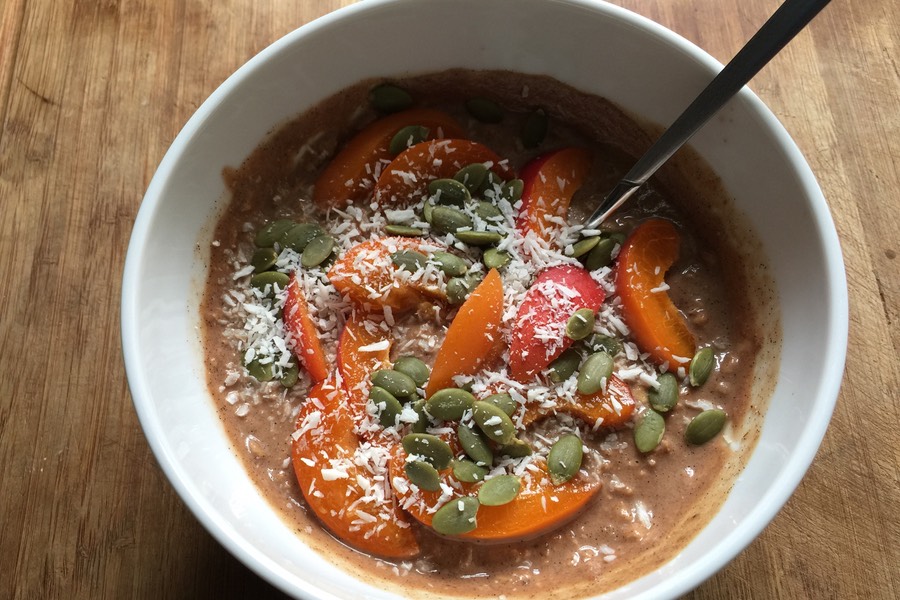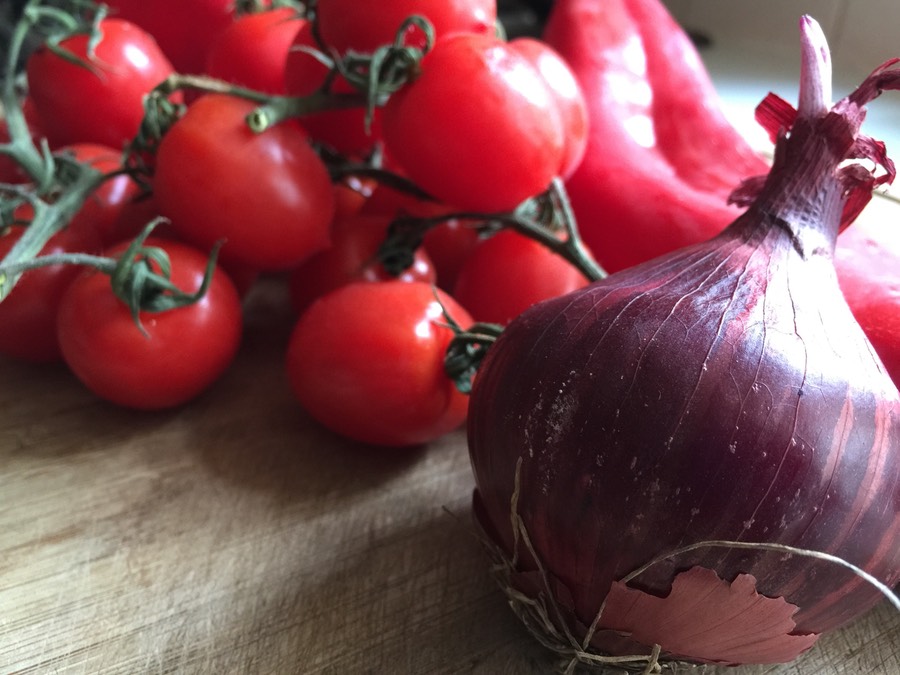Slow food it tastes so good!
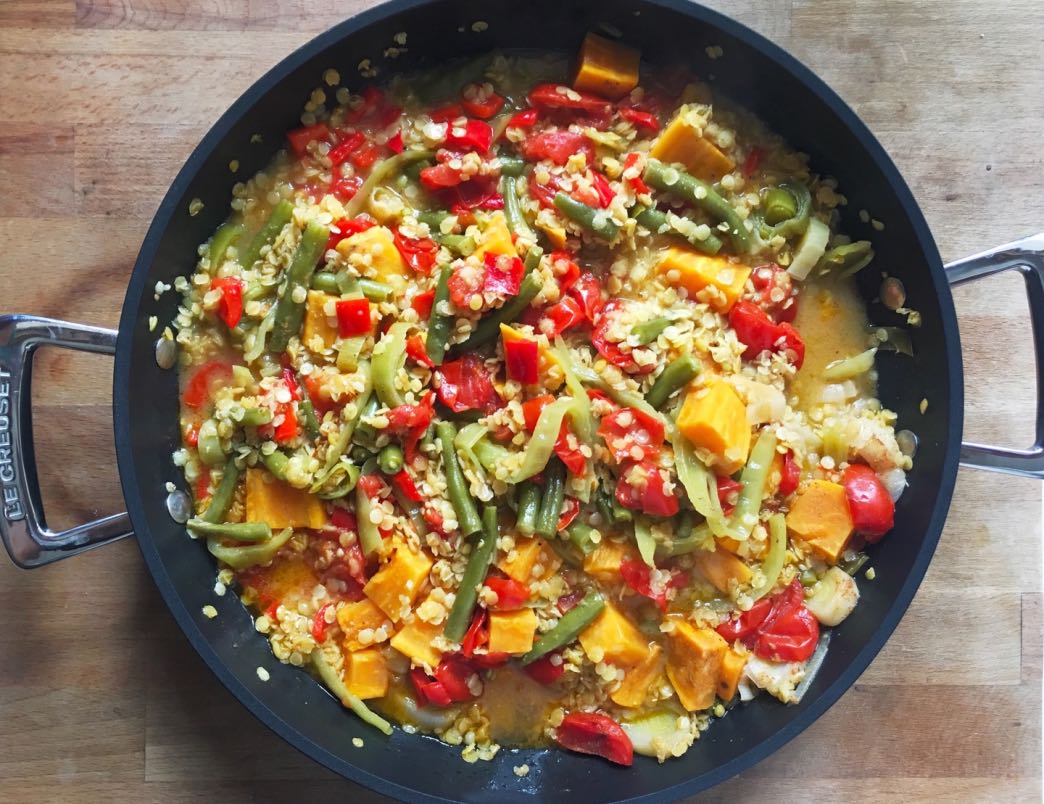
When food is simple it makes me happy. I don’t want to create complex, intricate works of ‘art’ when it comes to food—not usually. It has to taste good, look reasonably presentable and above all the ingredients list needs to be simple and readily available. Seasonal food is a good choice for most of the time.
You can use special slow cookers but you can use a good heavy pan or pot with a lid. I’m using a Le Creuset non-stick shallow casserole with a lid—the 30cm size.
What do I mean by slow cooking? It’s not about cooking food for hours but it is about cooking all the ingredients on a medium to low heat for 30 to 40 minutes—sometimes an hour together. You may need to pre cook some of the ingredients before doing the ‘final’ cook. For example if I was adding chickpeas—I would make them from dry chickpeas but you could use tinned or carton varieties.
Why slow cooking? Cooking everything in one go, slowly over a long period, and I’ve found that period is about 30 to 40 minutes is just fine, creates a deeper flavour. The key is not to use a high heat but a medium to low heat. Start with the medium heat and then for the last 10 to 15 minutes reduce it to a low heat. With some ingredients no stirring is required but with others you might need to give it stir halfway through. Let it rest for another 10 minutes and serve.
It’s so easy to make and you can have a great meal ready for four people ready within an hour. Most of your time will be taken up with prep—depends on how long it takes you to chop the vegetables. On average it takes me about 10 minutes.
What can you cook? Any combination of vegetables, beans, lentils, pulses, herbs (fresh or dried), even frozen vegetables. As I mentioned above somethings you may need to pre-cook—I use dry chickpeas, so they need to be cooked first. In one of the recipes I used baby new potatoes—they were cooked first before doing the final cooking with all the ingredients.
Examples of slow foods
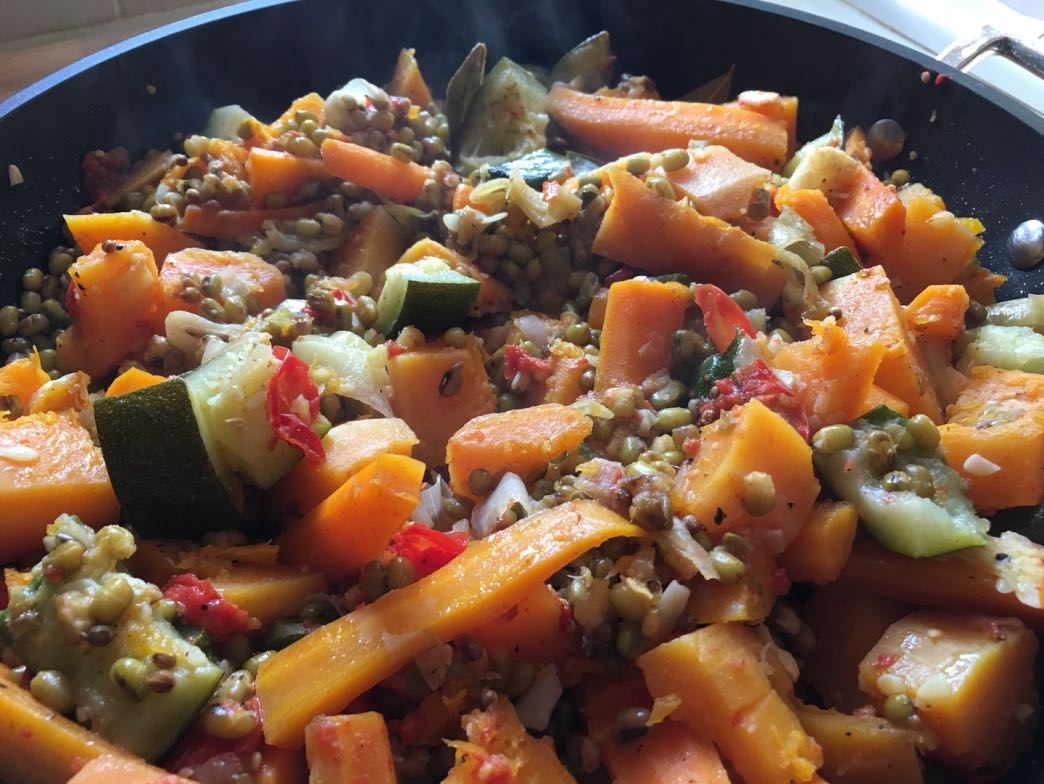
Used some of the veggie burg mix left. Made a paste from it, added aubergine, courgettes, peppers, cherry toms, peas, onion, ground cumin, sea salt, lime juice, olive oil—cook slowly for 30 to 40 mins
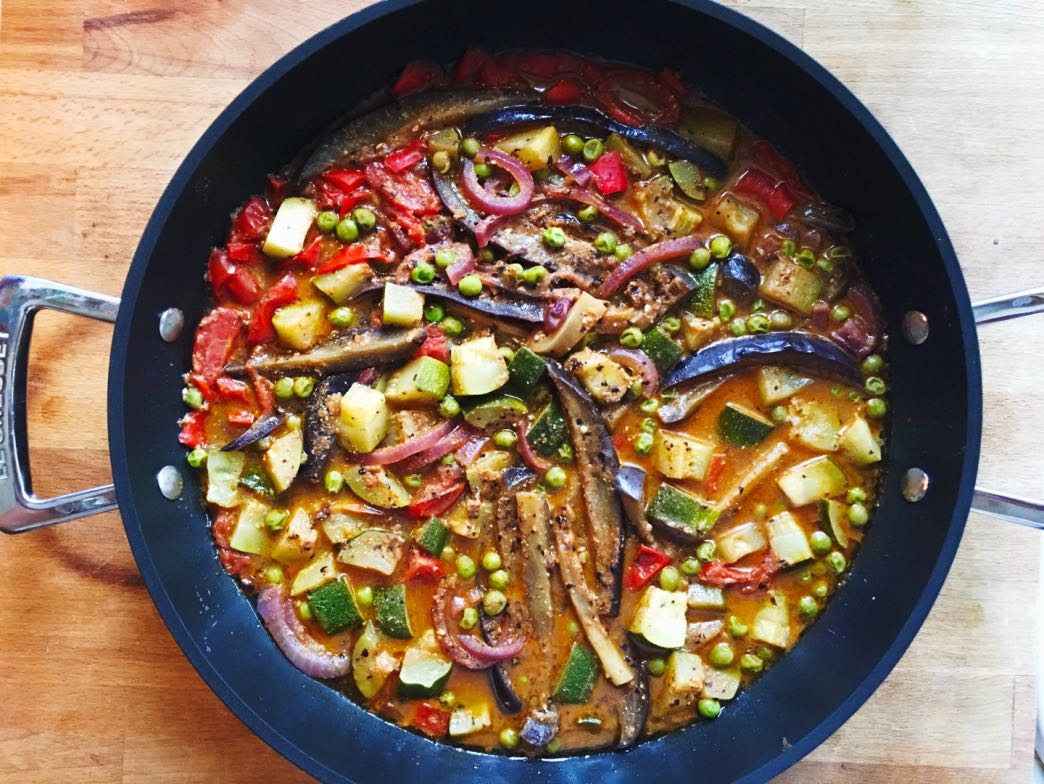
Experimenting with slow, easy food. Grab some ingredients you like and try it. I used: leeks, french beans, sweet potato, split red lentils, peppers, cherry tomatoes, ground cumin, cinnamon, cayenne, olive oil, apple cider vinegar and water. You’ll be pleasantly surprised by the results.

You could even make a slow curry. Here I used baby new potatoes, french beans, onions, tomatoes, spinach, seasoning, cayenne, ground cumin/coriander, ground cinnamon, seasoning, lemon juice, olive oil and water.
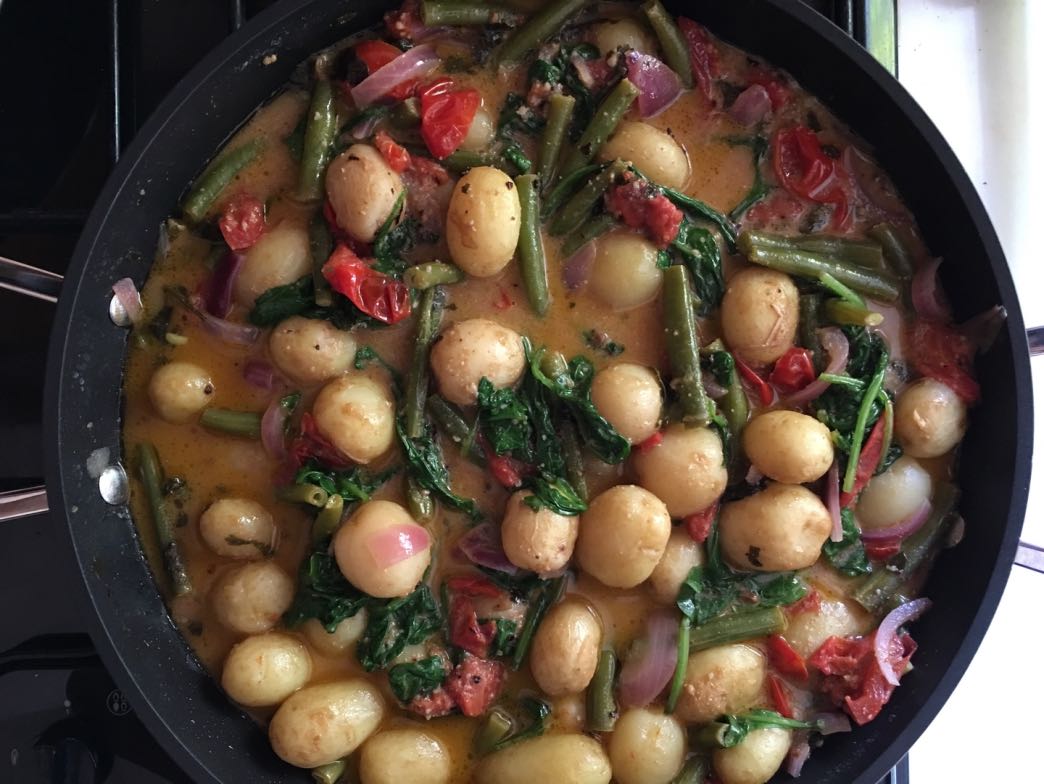
Baked beans are an example of slow food. If you make them at home—they will take a while to make. If you have the sauce ready—then it’s going to be about an hour, otherwise it will take about two hours. I made my own—curried version. Using haricots beans, for the sauce: toms, onions, peppers, cumin, cayenne, olive oil, apple cider vinegar, tomato purée, tahini, turmeric, fresh coriander, on a bed of bulgar wheat.
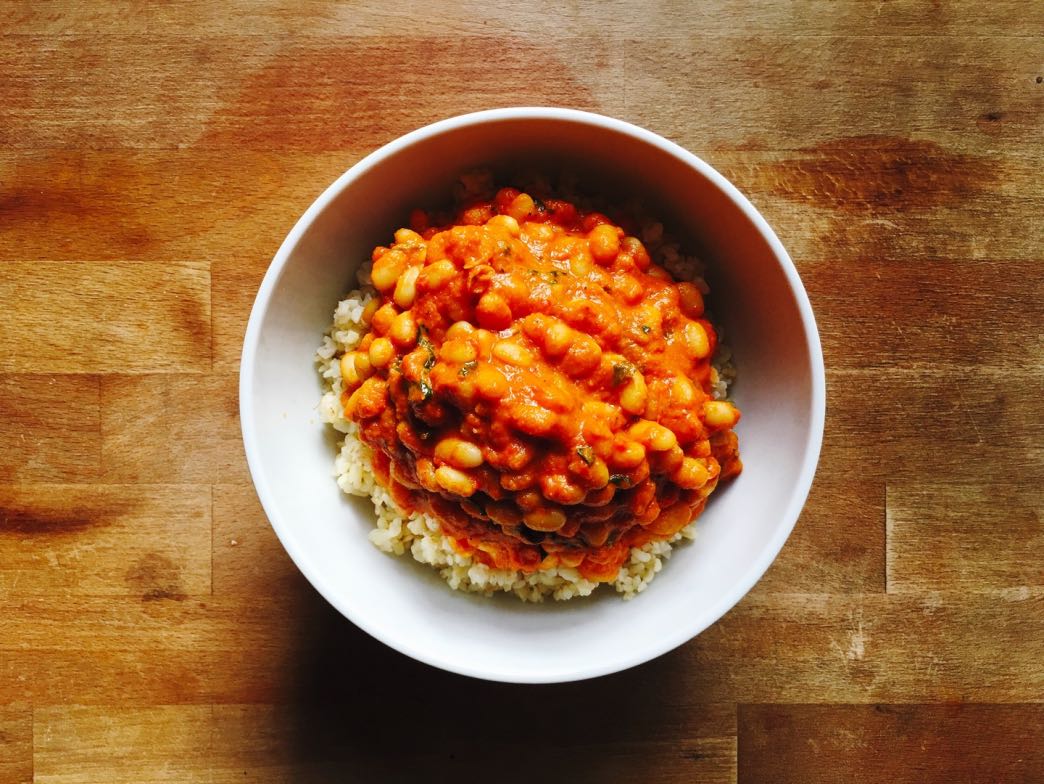
What makes slow food special is the longer gentle cooking. It really brings out the flavours of all the different ingredients—you’ll notice it, and it’s really easy to prepare. Chop some vegetables, add a bean or lentil if you want, herbs, spices, seasoning, olive oil, cider vinegar or lemon juice and a little water to start the magic—you’re good to go. It’s that easy. Just remember to turn the heat down—medium to low heat and definitely low heat for the last 10 minutes. Then let it rest for another 10 minutes before you serve it.
A heavy wide pan with a lid is necessary. If you have a smaller pan—reduce the ingredients accordingly. The cooked food will shrink and you’ll notice more liquid. Don’t add too much water—it’s just used to start the cooking process and stop the food sticking to the pan. Once you start cooking—leave the lid on. Don’t keep lifting it to check progress. As long as the heat is medium to low it should be fine. If you feel that the food is cooking too quickly—turn the heat how. Cooking times will vary for everyone—it’s not an exact science.
I’ve not given you an ‘exact’ recipe because I think it’s good practice to experiment and I think it’s a very forgiving way of cooking. Keep the spice/herb ingredients simple—about three is good. The vegetable list can be large.
Have fun!

